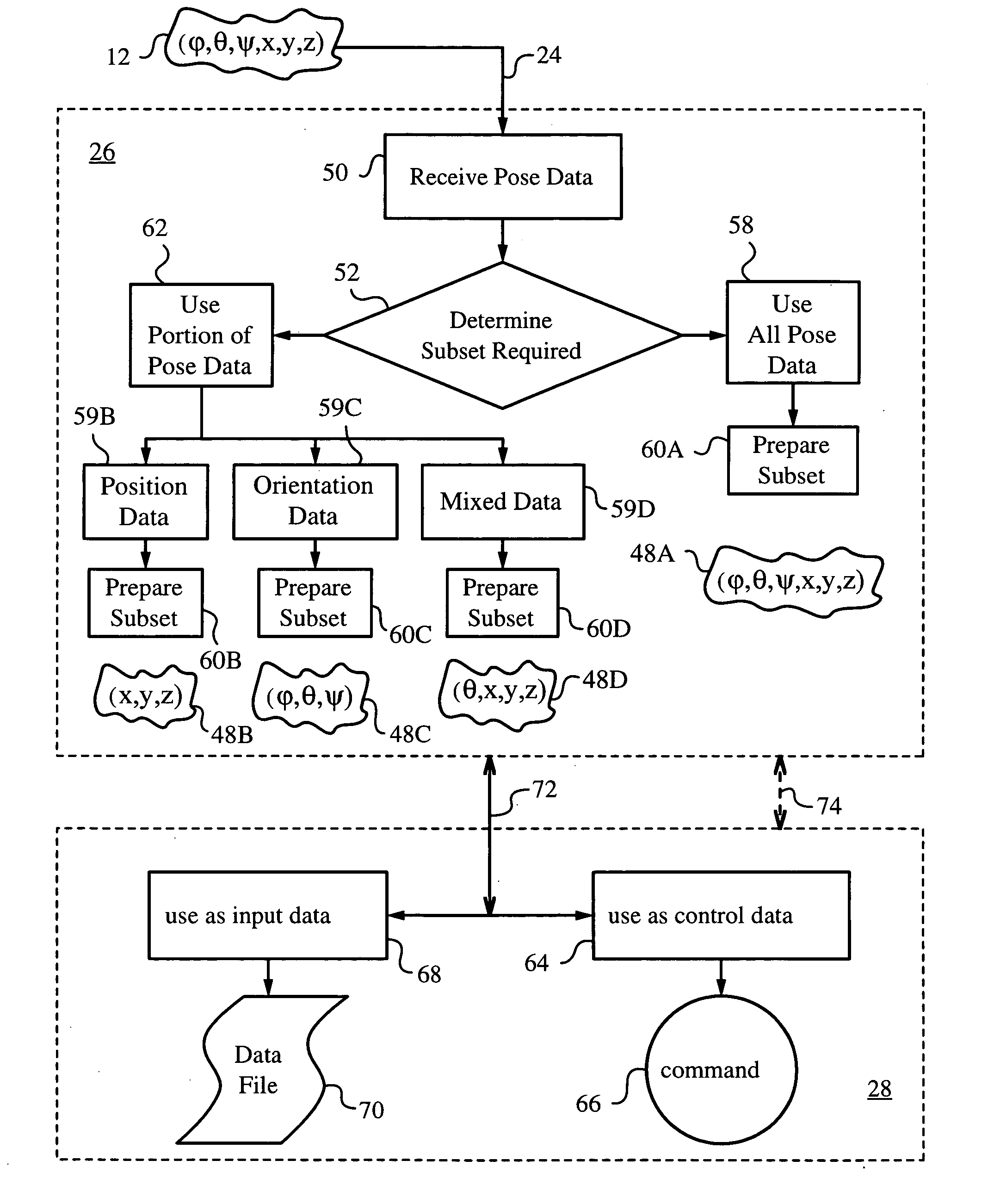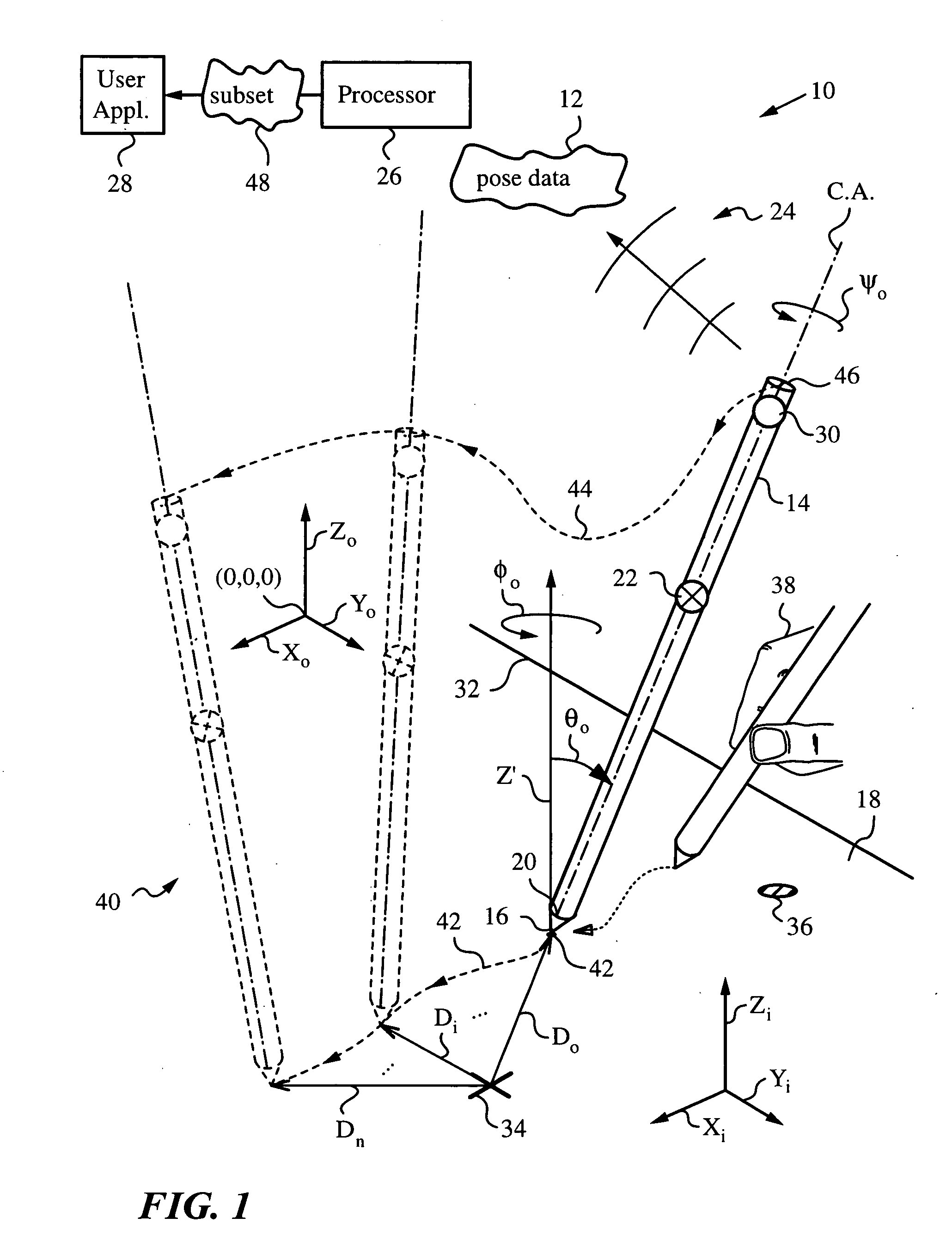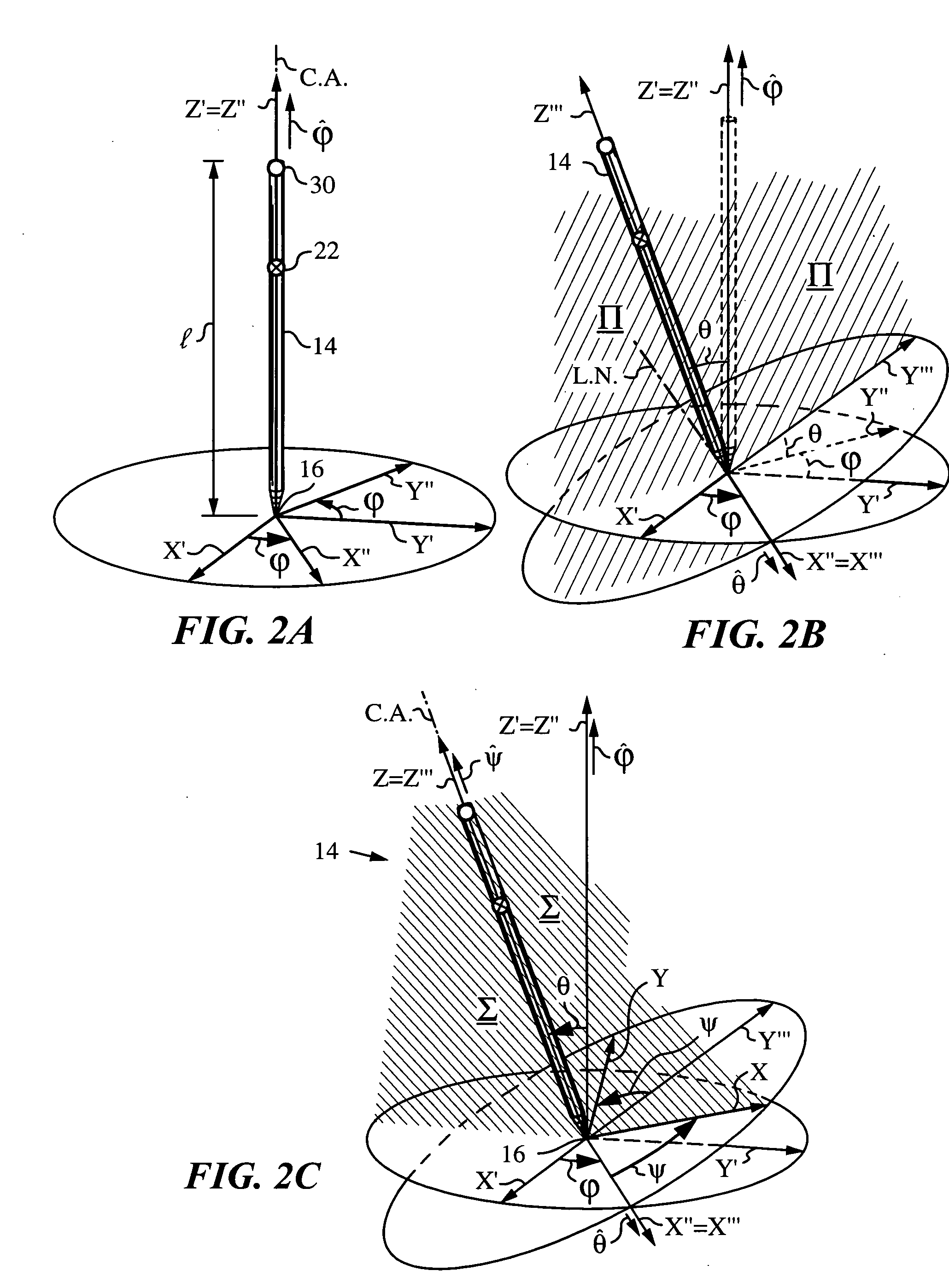Processing pose data derived from the pose of an elongate object
a technology of elongate objects and data, applied in the field of processing data derived from elongate objects, can solve the problems of bulky and inconvenient, limited prior art approaches, and the limitation of the data set of state-of-the-art pens and styluses employing optical systems
- Summary
- Abstract
- Description
- Claims
- Application Information
AI Technical Summary
Benefits of technology
Problems solved by technology
Method used
Image
Examples
Embodiment Construction
[0028] The present invention will be best understood by first referring to FIG. 1 illustrating an exemplary apparatus 10 for processing pose data 12 derived from a pose of an elongate object 14. Elongate object 14 moves while its tip 16 is in contact with a plane surface 18. Apparatus 10 processes pose data 12 that describe the pose of elongate object 14 at a number of measurement times. Thus, pose data 12 describes the motion that elongate object 14 executes or is made to execute by a user while tip 16 is in contact with surface 18. A sensor 20, e.g., a piezoelectric element or any other suitable sensor can be used to ascertain when tip 16 is contacting surface 18.
[0029] Elongate object 14 is any type of generally elongated object whose pose when object 14 is stationary or in motion yields useful pose data 12. For example, elongate object 14 is a cane used for walking support and surface 18 is a walking surface, or elongate object 14 is a robotic arm and surface 18 is a work surfa...
PUM
 Login to View More
Login to View More Abstract
Description
Claims
Application Information
 Login to View More
Login to View More - R&D
- Intellectual Property
- Life Sciences
- Materials
- Tech Scout
- Unparalleled Data Quality
- Higher Quality Content
- 60% Fewer Hallucinations
Browse by: Latest US Patents, China's latest patents, Technical Efficacy Thesaurus, Application Domain, Technology Topic, Popular Technical Reports.
© 2025 PatSnap. All rights reserved.Legal|Privacy policy|Modern Slavery Act Transparency Statement|Sitemap|About US| Contact US: help@patsnap.com



